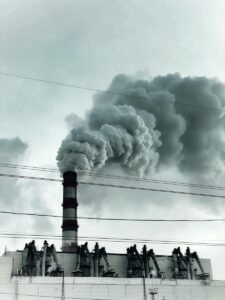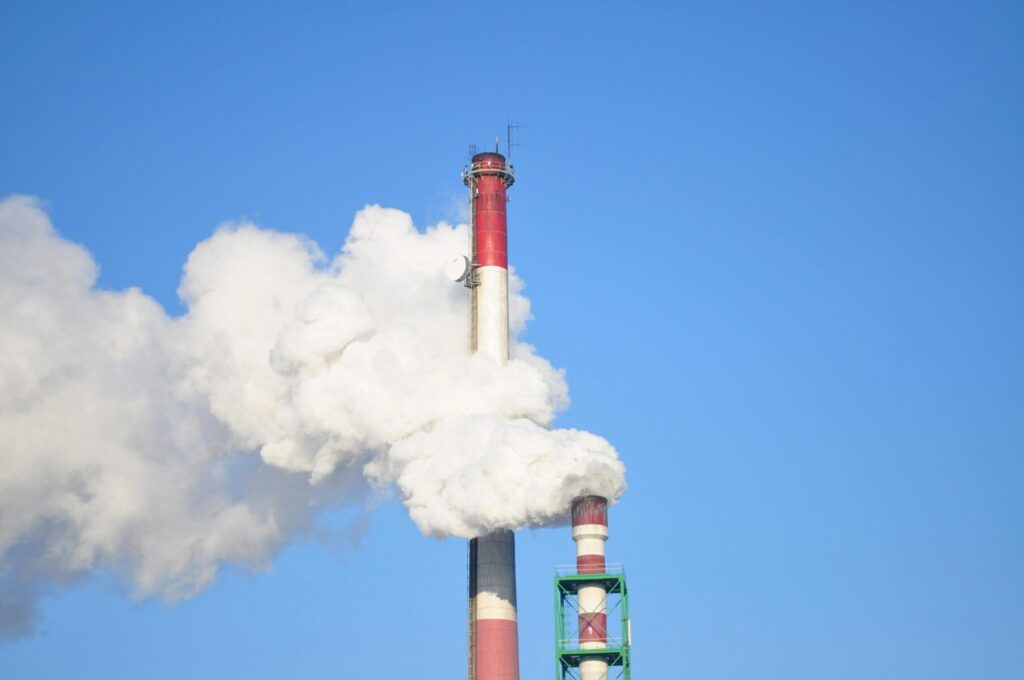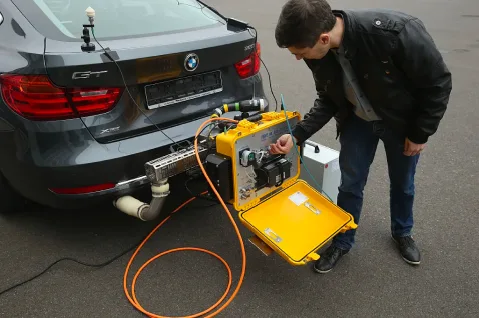
Fact: industrial workplaces and manufacturing facilities are often hazardous environments due to the dangers of explosive gases being released during normal operations. Negate creating processes that help reduce explosive gas leaks, and you could find yourself in trouble with the Environmental Protection Agency (EPA) for violating Method 21 regulations.
And the last thing you need on your mind is a run-in with environmental authorities.
What’s more, as environmental, social, and governance (ESG) initiatives play an ever-larger role real-driving and internal combustion engine-powered (ICE) vehicles, recognizing common explosive gases will be key to creating a profitable, yet environmentally sustainable operation.
GlobalMRV here: if you’re an original engineering manufacturer (OEM) or work in industrial operations, you’ll want to read this short primer on the most common explosive gases.
In this blog, our team of Ph.D. researchers, managers, analysts, engineers, and technicians will walk you through some of the most common explosive gases — and explain why they’re relevant for keeping a cleaner, emissions-free operation for your business.
Grab your favorite beverage, note-taking tool, and thinking cap. These are the four most common explosive gases used in manufacturing operations.
10 explosive gases (and their explosion limits)
| Gas | Lower Explosion Limit (LEL)* | Upper Explosion Limit (UEL)** |
| Hydrogen (H₂) | 4.0% of total volume | 75.6% of total volume |
| Oxygen (O₂) | Does not have an LEL | Does not have a UEL |
| Methane (H₂) | 5.0% of total volume | 15% of total volume |
| Acetylene (H₂) | 2.5% of total volume | 100% of total volume |
| Propane (CH4) | 2.1% of total volume | 9.5% of total volume |
| Iso-butane (C4H10) | 1.8% of total volume | 8.4% of total volume |
| Ethylene (C2H4) | 2.7% of total volume | 34% of total volume |
| Ethanol (C2H5OH) | 3.5% of total volume | 19% of total volume |
| Methanol (CH3OH) | 5.5% of total volume | 44% of total volume |
| Toluene (C6H5CH3) | 1.2% of total volume | 7% of total volume |
* Lower Explosion Limit (LEL) refers to the lowest concentration of combustible gas in the air that can explode when ignited.
** Upper Explosion Limit (UEL) refers to the highest concentration of combustible gas in the air that can explode when ignited.
4 Prevalent explosive gases used in manufacturing

Though many explosive gases exist, some are more prevalent than others. In the manufacturing and industrial sector, these four explosive gases are often used in operations:
- Hydrogen
- Oxygen
- Methane
- Acetylene
We’ll describe each in greater detail in the following sections.
1. Hydrogen
The first gas on our list is hydrogen. Hydrogen can become explosive when it’s exposed to oxygen.
In its liquid form, hydrogen can also cause frostbite. Especially in the automotive industry, being safe with hydrogen is a must.
Take for example conducting energy efficiency audits. If staying energy efficient and in compliance with regulatory agencies is of concern for you and your vehicles, you can keep your fleet vehicles safe and in compliance with regulatory authorities by performing regular energy efficiency audits for a safer industrial operation.
2. Oxygen
While oxygen isn’t flammable, this gas can still lead to explosions and accidents if it comes into contact with materials that can ignite.
Oxygen can be the proverbial tinder needed to ignite other materials that wouldn’t be flammable were they not exposed to an oxygenated environment.
For example, we often consult organizations on the sustainable use of oxygen as it pertains to engine development and research in the automotive industry. By being aware of the opportunities and threats afforded by oxygen, OEMs and businesses can make smarter, greener decisions with explosive gases — like oxygen — for their manufacturing operation.
3. Methane
Yes, methane, the same gas that’s produced when cows fart and burp.
Methane has a global warming potential (GWP) of 27 to 30 and makes up .00018% of greenhouse gas percentages.
While this number may seem small, consider the fact that the U.S. emitted more than 2.257 metric tons of Methane in 2020 alone, making methane one of the more prominent gases contributing to air pollution.
Finally, methane is an asphyxiant, a gas or vapor that can cause suffocation or death. Methane exposure — if ingested in unhealthy quantities — can lead to methane gas poisoning.
4. Acetylene
Acety-what? That’s right: Acetylene.
Businesses and OEMs that work with certain metals: you’ll want to pay close attention here.
Acetylene can produce explosions when combined with certain metals. This particular gas can be an ignition source for explosions.
As such, industrial operators and OEMs will want to keep tabs on monitoring and reporting emissions related to acetylene to create a safer, cleaner industrial enterprise.
News update: on emissions

Speaking of harmful emissions caused by explosive gases, our operations team keeps up to date on the latest gaseous emissions updates to keep you in the know.
Check out what we learned about Hino, one of America’s largest medium duty truck brands, as it relates to emissions performance data in the diesel engine industry.
Portable emissions measurement systems can mitigate risks with explosive gases

When you’re in the business of working with toxic fumes and explosive gases, leak detection repairs and environmental sustainability needs to be top of mind.
Why? Because the safety and efficiency of your operation could depend on whether you’re monitoring the explosive gases your company uses.
The good news is that you don’t need to tackle this lofty endeavor alone. We’re here for you.
Since 2018 alone, GlobalMRV has collected and analyzed over 3,000 hours of reliable data with explosive gases and helped save OEMs and companies more than $5,000,000 on real driving emissions (RDE) testing for clients of all different industries and niches.
We’ve run more than 60 different types of diagnostic testing regimes and supported over 100 different vehicles and engines for overall emissions reduction.
If you’re looking for a reliable company that’s here to help you curb greenhouse gas emissions, look no further. Contact us today for your complimentary, no-cost consultation how to improve and sustain your next emissions-based project.
A More Sustainable Operation Starts Here: Welcome to GlobalMRV.